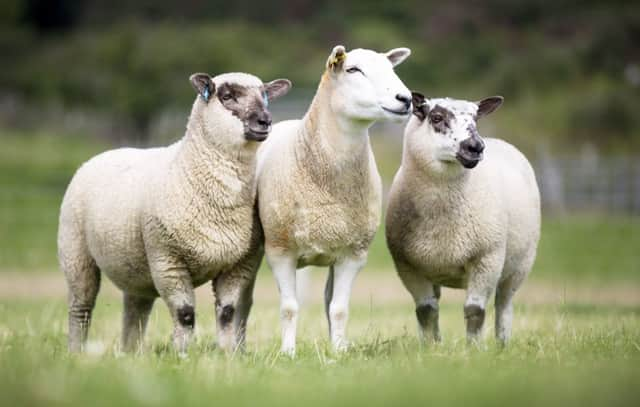Profit from sheep farming


As few as 5% of rams working in Northern Ireland flocks are performance recorded, consequently the sheep sector is missing out on over £5 million in improved lamb value, a figure that will become even more significant post Brexit.
“Future payments are uncertain and farmers have little control, however the other portion of their income achieved from stock sales is the only element that they will be able to influence, and it starts with breeding stock,” says Cafre’s Dr Eileen McCloskey.
Advertisement
Advertisement
Speaking ahead of the open day she says: “Flock improvement is a combined approach between pedigree breeders and commercial producers. For starters, performance recording not only gives pedigree breeders and ram buyers an objective way to assess the genetic potential of rams selected for breeding, but it also introduces that essential added value. As Estimated Breeding Values (EBVs) become more widely promoted, rams with high EBVs can achieve between £300 to £400 premiums at ram sales. Equally important, clearance rates can be higher than those for unrecorded flocks.
“In GB, commercial producers are prepared to pay premiums for rams, simply because they’ve become aware that the only way to permanently lift flock productivity and with some certainty, is through selective breeding. In other words, careful choice of rams known to have the right genetics to produce the type of lambs breeders and their commercial customers are looking for.
“Using rams with superior breeding can increase flock profitability. Financial benefits vary from farm to farm – but a £3 per lamb increase is often reported in trials, a figure worth over £800 over a ram’s working lifetime.”
Using high performance recorded rams is a proven way to improve lamb value in various ways including
· Selling lambs a fortnight earlier to avoid falling prices
Advertisement
Advertisement
· Finishing 20% more lambs off grass, rather than selling them as stores
· Improving carcase grades – targeting 50% within R, U bracket worth £1.68 per lamb
· Improving lamb growth rate by 10% to achieve an extra £4.80 per ewe
· Improve weaning percentage by 0.2 lambs per ewe worth an extra £16 per ewe
Advertisement
Advertisement
She adds: “Breeding from unrecorded rams is a plunge into the dark. They could take flock performance forwards or backwards, but there is no way of knowing until their lambs are sent for slaughter. It is much easier to predict the positive value to the lamb crop of using a recorded ram.”
Until recently the use of high genetic value rams has been more or less ignored in NI, but with the return of many young farmers from college to their family enterprise, the knowledge they have gained is seeing a steady growth in demand in the province, according to event host, Kevin McCarthy who has been performance recording his 50 ewe pedigree Hampshire Down flock for 30 years. It currently features within the breed’s top 10%.
“Performance recording is both permanent and cumulative,” he explains. “Genetic gain has been particularly exponential and I’ve proved that growth rates and muscling can be greatly enhanced with selected breeding,” he says.
“For example, my ram lambs born last year recorded a scan weight of 6.97kg, that’s 5.85kg heavier than in 2000. Half of this gain – 2.92kg will be passed on to his progeny consequently at £1.80 per kg, that extra gain could be worth as much as £5.27 per lamb. On the other hand, it’s not just about weight of lamb sold, this gain is expressed in terms of reduced days to slaughter weight.
Advertisement
Advertisement
“However, whilst improving my flock’s genetic potential, I’ve been equally focused on phenotype proving that it is possible to breed sheep with good conformation and matching good figures and attempting to dispel the myth that recorded sheep have poorer carcases than non-recorded sheep.”
The event will also feature the following presentations
· Maximising returns from grass – monitoring growth, quality and utilisation: Afbi’s Dr Aurelie Aubry
· Maximising farm labour efficiency including the use of adequate and safe handling facilities: Dr McCloskey
· Improving efficiency with sheep EID technology: Dr McCloskey and TGM’s George Megarry
Advertisement
Advertisement
· Meeting processors expectations: Dunbia’s George Williamson
Scanner, William Tait will demonstrate ultra sound scanning.
Event chairman, NSA’s Edward Adamson adds: “This would be a very useful event for all sheep farmers to attend, both pedigree and commercial to find out more about how best to plan their enterprises to deliver maximum returns under future regimes.”
· Sheep Production – Maximise Your Returns will be staged at Mossbank Farm, Ballycreelly Road, Comber BT23 5PX on Saturday 14 April commencing 1.00pm; hosts HDSBC IRL; speakers include from AFBI, CAFRE, Dunbia, NSA and TGM Software.